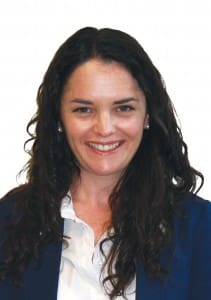SHEEP producer groups across Australia will be coached in practice change to implement research and development findings and innovations in a new Making More from Sheep program being trialled this year.
Over the last five years the MMfS program has engaged more than 12,200 producers in 590 field days and workshops across southern Australia.
Sheep and wool producers have increased their average annual net income by up to almost $12,000 (or $10 per hectare) after participating in MMfS events, with more than half of attendees intend to change practices within their businesses – mainly in the areas of reproductive efficiency, genetics, business planning and pasture management.
But despite these results and an average satisfaction score of 8.5/10 from MMfS participants, Meat and Livestock Australia is starting a pilot program where groups of farmers will be coached through their individual on-farm strategies to support practice change and improve whole farm business outcomes.
MMfS is funded by MLA and Australian Wool Innovation, to provide Australian lamb and wool producers with a best practice package of information, management tools and events to assist them to achieve profitable and sustainable sheep production.
MLA’s general manager livestock productivity, Dr Jane Weatherley, said since an evaluation of the program was completed in 2014, MLA has conducted a skills training needs analysis with industry and consulted with industry experts and delivery partners to look at changes to the R & D adoption model to support producers to implement change on farm to improve their business performance.
“We are looking to have 10 groups around Australia – four southern and four southern and at least two in Western Australia.
“We will run that for a year to see what sort of impact we have with that particular model, but will be keeping on with the MMfS program until we have good evidence that the new model is best way to go,” she said.
Current MMfS program lacks supportive follow-on process
Dr Weatherley said in the current MMfS program R & D results and innovations are presented in workshops, field days and at producer demonstrations sites, outlining opportunities and specific practices. But implementing much of what producers learned when they return to the farm is often a complex process for many, she said.
It is hoped that that the supported learning process being trialled in the new R & D adoption pilot will have a greater impact with helping producers implement R & D and innovations.
“We don’t have the follow-on process that supports them to actually implement these practices in their business.
“We want to help them work through some of the complexities of their business and help them implement it over a period of time so a lot of these practice become second nature,” Dr Weatherley said.
2014 analysis proved MMfS program worth
The 2014 report ‘Assessing the Impacts of MLA’s Southern Majority Market Program’ was the first major impact assessment of the MMfS and Making More Money from Beef programs, and included both phone surveys and economic impact case studies of producers who attended workshops and events.
“The assessment found that over three quarters (76 percent) of participants made changes to their business, with 66 per cent saying the changes had immediate benefits,” Dr Weatherley said.
The three top benefits reported were increased production (76pc), feeling more in control and less stress (69pc) and decreased losses (56pc).
In quantifying the financial benefits of practice change on case study farms, the review found:
- Prime lamb enterprises recorded an average gross margin increase of $18 per hectare (6pc) and a 73pc increase in average profit per kilogram carcass weight (CW) of lamb produced ($0.19)
- Dual-purpose sheep enterprises recorded an average gross margin increase of $8 per hectare (3pc) and a 36pc increase in average profit per kilogram CW of lamb produced ($0.09)
- Wool enterprises recorded average gross margin increases of $13 per hectare (6pc), resulting in a 24pc increase in average profit per kilogram of clean wool produced ($0.37)
When asked about farm profitability and productivity, the most common changes related to improved ewe management and lamb survival (35pc of participants who made changes).
In other areas of their businesses, survey participants also reported improved animal welfare (85pc), and environmental benefits relating to improved management of soil (22pc) and pasture resources (30pc).
Most respondents said they’d gained increased knowledge and skills (89pc) and confidence (98pc) as a result of attending an MMfS event.
The website (www.makingmorefromsheep.com.au) contains all the content within the MMfS manual, including a Quick Quiz to help producers start identifying areas of their enterprise needing attention, as well as upcoming events being run by the program.
The full report, Assessing the Impacts of MLA’s Southern Majority Market Program, can be downloaded here.
Source: MLA.


I would ask people to read ‘Assessing the Impacts of MLA’s Southern Majority Market Program – B.COM.0341’ and see if you would believe any of the conclusions they come to. The demise of independent critical analysis of the expenditure of industry funding in this country is truly worrying.